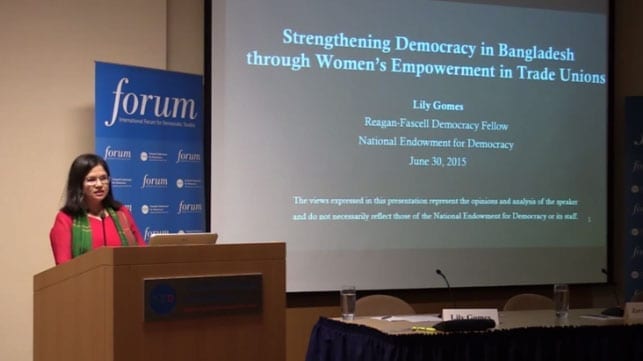Women garment workers primarily fuel Bangladesh’s $24 billion a year garment industry, yet women are “still viewed as basically cheap labor,” says Lily Gomes, Solidarity Center senior program officer for Bangladesh.
“There is a strong need for functioning factory-level unions led by women,” says Gomes, who is leading efforts to help empower women workers to take on leadership roles at factories and in unions throughout Bangladesh. Some 60 percent of garment factory unions are now led by women, she said, and they are leading contract negotiations and discussions with government over improving working conditions.
Gomes, a Reagan-Fascell Democracy fellow at the National Endowment for Democracy, spoke last week in Washington, D.C., about the status of women, the legal protections (or gaps in those protections) for women workers, the recent deadly factory disasters and the ensuing international outcry and pressure on international clothing brands to demand workplace safety improvements.
This legal and international environment offers the opportunity to create “the political space for unions to organize, register and collectively bargain,” says Asia Regional Program Director Tim Ryan, who also spoke at the event.
“Women garment workers at the factory level, at the union and federation levels, are asserting themselves both as leaders in their organizations and now in their communities,” Ryan says.
But “the pressure both from below and above has to continue to maintain these gains women workers are making, and to further the fitful progress of democracy in Bangladesh.”

